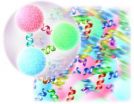(Press-News.org) Madison, Wis. — Just like human teenagers, fruit flies that spend a day buzzing around the "fly mall" with their companions need more sleep. That's because the environment makes their brain circuits grow dense new synapses and they need sleep to dial back the energy needs of their stimulated brains, according to a new study by UW- Madison sleep researchers.
Researchers saw this increase in the number of synapses -- the junctions between nerve cells where electrical or chemical signals pass to the next cell -- in three neuronal circuits they studied. The richer "wake experience" resulted in both larger synaptic growth and greater sleep need.
The study, published today in the journal Science, provides structural evidence for the theory that "synaptic homeostasis" is one of the key reasons all animals need sleep. Researchers Dr. Daniel Bushey, Dr. Giulio Tononi and Dr. Chiara Cirelli of the Wisconsin Center for Sleep and Consciousness also looked at the role the gene implicated in Fragile X syndrome plays in re-normalizing the brain during sleep.
In one experiment, researchers took young fruit flies that spent the first days of their lives alone in single tubes too small to allow flying. Then they released them in groups into a large lighted chamber that allowed them to fly around together for their 12-hour day.
All the flies grew more synapses while they were awake for several hours, the research showed. But this was especially true for the flies in the enriched environment, which grew new branches with many new synapses. After their mall visit, the flies were put back into the single tubes and slept much longer for at least one day. Their synapses returned to normal size after sleep.
Those flies that visited the mall, but were deprived of sleep, continued to have synapses that were larger and denser.
"Sleep prunes back the new synapses; you have to create space for synapses to grow again or you can't learn again the next day," says Cirelli, associate professor of psychiatry at the School of Medicine and Public Health. "Even more importantly, the pruning saves energy, and for the brain, energy is everything. Learning without sleep is unsustainable from an energy point of view."
In earlier work, the lab also showed that the strengthened synapses had higher levels of proteins that build up during a day of learning, and that sleep also dials down protein levels.
In the current study, UW researchers also looked at the role of the gene Fmr1, which, when it isn't expressed in humans, results in Fragile X Syndrome, a cause of autism and mental disabilities. People with Fragile X also have difficulty sleeping.
In this study, the sleep researchers looked at what happens when Fmr1 is over-expressed; that is, when more Fmr1 protein is present in the brain. Previous work had shown that Fmr1 probably facilitates the pruning of synapses. Bushey and colleagues found that when Fmr1 is over-expressed, the increase in synapse number during wake does not occur, and the need for sleep declines.
"This suggests that if the synapses are already down regulated, there is less need for sleep," Cirelli says. "It is more evidence for the theory that sleep is driven by the need to reduce the brain's energy needs."
INFORMATION:
This research was funded by the National Institute of General Medical Sciences, the NIH Director's Pioneer Award and the Canadian Institutes of Health Research.
END
Many people when stressed turn to high calorie "comfort foods". Despite the contribution this behavior makes to the current obesity epidemic, little is known about the molecules and nervous system circuits that control it. Insight into this could provide new targets for the development of therapeutics to curb this potentially detrimental behavior. In this context, a team of researchers, led by Jeffrey Zigman, at The University of Texas Southwestern Medical Center, Dallas, working with a new mouse model of prolonged psychosocial stress that features aspects of major depression ...
High levels of "good" cholesterol (HDL cholesterol) are associated with a decreased risk of coronary artery disease (CAD) — a disease of the major arterial blood vessels that is one of the major causes of heart attack and stroke. This suggests that therapeutics that increase HDL levels could be clinically useful. However, such therapies have not yielded clear-cut decreases in disease, indicating that the beneficial effects of HDL are likely not related simply to its abundance. More evidence to support this notion has now been provided by a team of researchers, led by Ulf ...
Although homeowners continue to struggle with their mortgage payments and try to avoid foreclosure, many banks see nothing wrong with concurrently pursuing foreclosures against borrowers who are seeking loan modifications. This controversial practice, called dual tracking, seems less like a smart business tactic and more like a way to punish homeowners working to keep their homes. While both federal regulators and various state officials work to curb or ban the practice of dual tracking, consumers should be aware that lenders may sell their homes before modifying their ...
Some individuals with epilepsy fail to respond to treatment with conventional drugs but benefit from consuming a ketogenic diet — a high-fat, low-carbohydrate diet similar to the more commonly known Atkins diet. A team of researchers, led by Detlev Boison, at the Legacy Research Institute, Portland, has now identified in mice the molecular mechanism responsible for the antiepileptic effects of the ketogenic diet.
The team found that a ketogenic diet reduces seizures in mice by decreasing expression of the protein Adk, which is responsible for clearing the natural antiepileptic ...
EDITOR'S PICK: What makes a happy meal?
Many people when stressed turn to high calorie "comfort foods". Despite the contribution this behavior makes to the current obesity epidemic, little is known about the molecules and nervous system circuits that control it. Insight into this could provide new targets for the development of therapeutics to curb this potentially detrimental behavior. In this context, a team of researchers, led by Jeffrey Zigman, at The University of Texas Southwestern Medical Center, Dallas, working with a new mouse model of prolonged psychosocial ...
In its infancy, when the universe was a few millionths of a second old, the elemental constituents of matter moved freely in a hot, dense soup of quarks and gluons. As the universe expanded, this quark–gluon plasma quickly cooled, and protons and neutrons and other forms of normal matter "froze out": the quarks became bound together by the exchange of gluons, the carriers of the color force.
"The theory that describes the color force is called quantum chromodynamics, or QCD," says Nu Xu of the U.S. Department of Energy's Lawrence Berkeley National Laboratory (Berkeley ...
None of us are strangers to stress of various kinds. It turns out the effects of all those stresses can change the fate of future generation, influencing our very DNA without any change to the underlying sequence of As, Gs, Ts and Cs. Now, researchers reporting in the June 24th issue of Cell, a Cell Press publication, have new evidence that helps to explain just how these epigenetic changes really happen.
"There has been a big discussion about whether the stress effect can be transmitted to the next generation without DNA sequence change," said Shunsuke Ishii of RIKEN ...
A doctor's office visit can be stressful, no matter what the circumstances, but imagine if you're visiting your doctor after you've been injured in a car accident.
If you've spoken with an attorney about your Florida motor vehicle accident, your attorney may have counseled you on how to protect your accident claim in the exam room. If you haven't spoken to an attorney, there are mistakes you want to avoid to prevent damaging any possible claim you have.
Mistakes to Avoid at a Visit With Your Doctor
Don't Lie About Your Pain or Ignore Pain: The most common, and ...
The ultimate source of some cancers is embryonic cells. Research published in the June 24th Cell, a Cell Press publication, traces the precursor of deadly esophageal cancers to leftover embryonic cells found in all adults.
Some people with gastric reflux disease have a greater risk of developing esophageal cancer. These patients often have Barrett's esophagus, a condition in which intestinal-like cells appear in the esophagus. Esophageal cancers are difficult to treat and, together with gastric adenocarcinomas, kill more than a million people each year.
"A lot of ...
Betelgeuse, a red supergiant in the constellation of Orion, is one of the brightest stars in the night sky. It is also one of the biggest, being almost the size of the orbit of Jupiter — about four and half times the diameter of the Earth's orbit. The VLT image shows the surrounding nebula, which is much bigger than the supergiant itself, stretching 60 billion kilometres away from the star's surface — about 400 times the distance of the Earth from the Sun.
Red supergiants like Betelgeuse represent one of the last stages in the life of a massive star. In this short-lived ...

